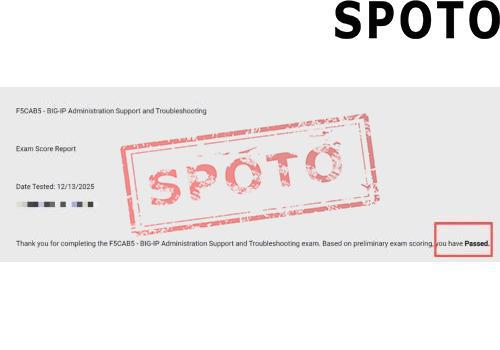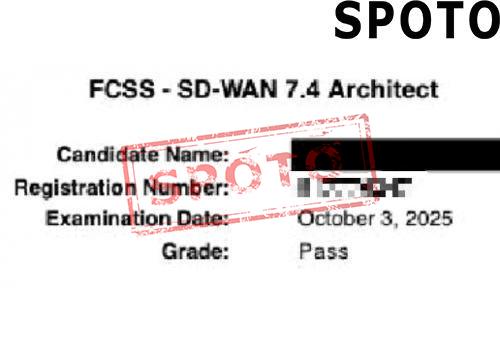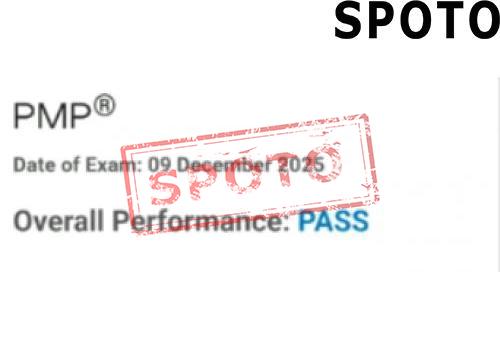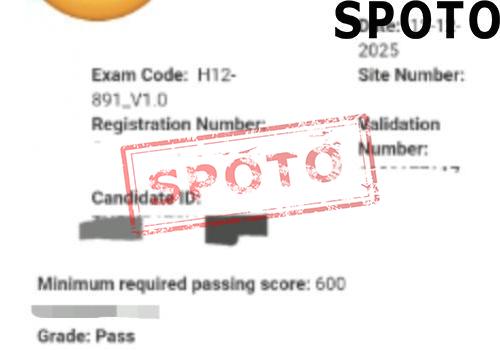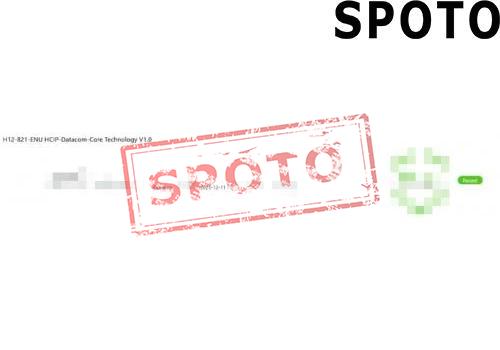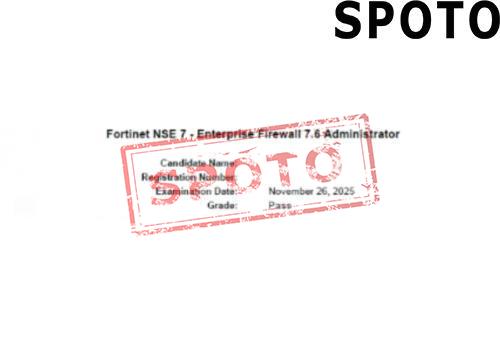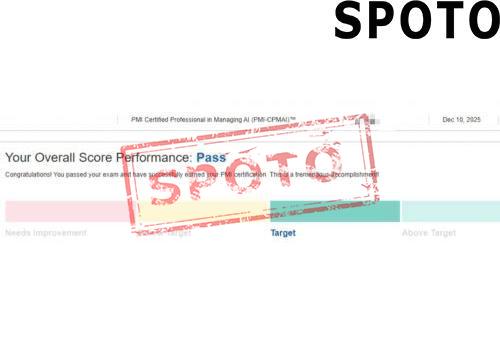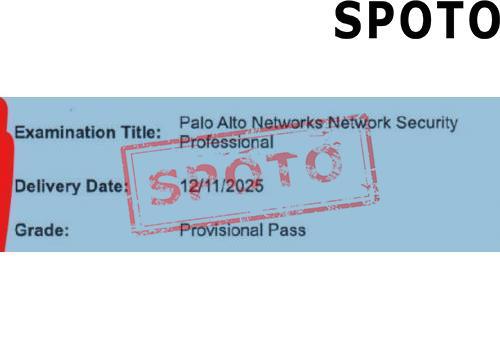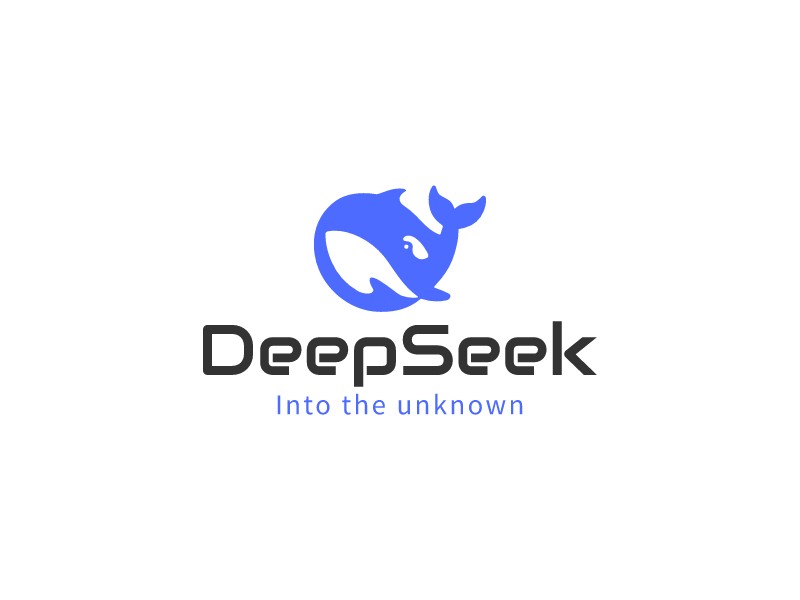
The Concept and Characteristics of Prompt Chains
Prompt chains are continuous sequences of prompts used to guide AI content generation. By breaking down complex tasks into manageable subtasks, they ensure that the generated content is logically clear and thematically coherent. Essentially, prompt chains are a "meta-prompt" strategy, not only telling the AI "what to do" but more importantly, guiding the AI "how to do it."
DeepSeek from entry to mastery (Tsinghua University) PDF Downlod
Mechanisms of Prompt Chains in Content Generation
-
Task Decomposition and Integration
-
Break down the complex topic into several main parts and discuss each part individually.
-
Set specific goals and expected outcomes for each subtask.
-
Summarize the key points of each subtask after completion and link them to the overall theme.
-
Use hierarchical structure diagrams or mind maps to illustrate the relationships between the decomposed parts.
-
Combine the results of each part to write a summary that ensures overall coherence.
-
-
Framework Construction for Thinking
-
Clearly define the core points of the problem and systematically collect relevant information for analysis.
-
List all key concepts and theories related to the topic and systematically organize them.
-
Use logical framework diagrams to show the process of information collection, analysis, and conclusion.
-
For each key concept, write a brief explanation and explain its role in the article.
-
Validate the effectiveness and applicability of the thinking framework through case analysis or practical application.
-
-
Activation and Association of Knowledge
-
List all key knowledge points related to the [topic] and explain them in detail one by one.
-
Find key knowledge points related to the [problem] from different fields and make creative associations.
-
Use metaphors or analogies to link [complex concepts] with everyday experiences for easier understanding.
-
Use brainstorming techniques to generate multiple possible associations and innovative points.
-
Integrate the newly generated viewpoints or concepts into the existing knowledge system.
-
-
Guidance and Expansion of Creativity
-
Think about the [problem/theme] from a completely new angle and propose unique insights.
-
Combine concepts from other fields that are unrelated to this and explore their applications in the [topic].
-
Set up a new scenario and discuss the development of the [problem/theme] in this scenario.
-
Challenge existing conventional views by thinking from the opposite angle and proposing new possibilities.
-
Combine theories from different disciplines to propose an innovative solution.
-
Start from the result and work backward to deduce possible causes and processes.
-
-
Quality Control and Optimization
-
Conduct self-assessment and quality checks after each step.
-
Use checklists to ensure each part meets the expected goals and quality standards.
-
Set up mid-term checkpoints to evaluate task progress and quality and make adjustments.
-
Request peer or expert reviews of the content and provide feedback.
-
Optimize and refine each part of the article based on feedback.
-
-
Multi-Modal Information Processing
-
Combine the text description related to [topic] with data to generate a comprehensive analysis report.
-
Create a report that includes images and data visualization based on [topic], detailing the visualization methods.
-
Design a multimedia content that integrates text, images, audio, or video elements to enhance richness.
-
Design an interactive data display scheme that allows readers to interact with the data, detailing the design steps.
-
Link different media forms of content, such as combining text content with image and data visualization.
-
Select appropriate data visualization tools and detail their usage methods to generate visualized content.
-
Combine specific cases with data analysis to generate a multi-modal report.
-
If you're passionate about the AI field and preparing for AWS or Microsoft certification exams, SPOTO have comprehensive and practical study materials ready for you. Whether you're preparing for AWS's Machine Learning certification (MLA-C01), AI Practitioner certification (AIF-C01), or Microsoft's AI-related exams (AI-900, AI-102), the certification materials I offer will help you study efficiently and increase your chances of passing.
Click the links below to get the latest exam dumps and detailed study guides to help you pass the exams and reach new heights in the AI industry:
- AWS MLA-C01 study materials (click this)
- AWS AIF-C01 study materials (click this)
- AWS MLS-C01 study materials (click this)
- Microsoft AI-900 study materials (click this)
- Microsoft AI-102 study materials (click this)
By achieving these certifications, you'll not only enhance your skills but also stand out in the workplace and open up more opportunities. Act now and master the future of AI!
Advantages and Challenges of Prompt Chains
| Category | Advantages | Challenges |
|---|---|---|
| Structured Thinking | Guide the AI to create content following a preset logic | Designing a reasonable logical structure requires experience and skill |
| Content Depth | Achieve deeper content exploration through multi-step guidance | Control the output depth of each step to avoid redundancy |
| Creativity Stimulation | Stimulate the AI's creative thinking from multiple angles | Balance creativity and coherence |
| Quality Control | Improve content quality through multiple iterations | Requires more practice and computational resources |
| Flexible Adjustment | Adjust subsequent prompts based on mid-term results in real-time | Requires higher judgment and decision-making abilities |
Design Principles of Prompt Chains
-
Goal Clarity
-
Logical Coherence
-
Gradual Complexity
-
Adaptive Flexibility
-
Diverse Thinking
-
Feedback Integration Mechanism
Design of Modular Prompt Chains
The design of prompt chains should follow certain principles to ensure their effectiveness and coherence in task execution. These principles provide clear guidance for the construction of prompt chains, helping to systematically organize and guide the decomposition and processing of tasks.
Design Model of Prompt Chains
To better understand and design prompt chains, the CIRS model (Context, Instruction, Refinement, Synthesis) can be adopted. This model summarizes the four key stages of prompt chain design:
-
Context: Provide background information and task overview
-
Instruction: Give specific instructions
-
Refinement: Modify and refine the initial output
-
Synthesis: Integrate all outputs to form the final outcome
Task Decomposition Steps for Prompt Chain Design
Task decomposition is a concept derived from problem-solving theory and systems engineering. Applying task decomposition to prompt design essentially simulates the way humans handle complex problems. This method is based on the principles of divide-and-conquer, hierarchical structure theory, and cognitive load theory.
Designing prompt chains based on task decomposition involves the following steps:
-
Clarify Overall Goals
-
Identify Main Tasks
-
Refine Subtasks
-
Define Microtasks
-
Design Corresponding Prompts
-
Establish Task Connections
-
Incorporate Feedback Adjustment Mechanisms
SPECTRA Task Decomposition Model
-
Segmentation: Divide the large task into independent but related parts
-
Prioritization: Determine the importance and execution order of subtasks
-
Elaboration: Explore the details of each subtask
-
Connection: Establish logical connections between subtasks
-
Temporal Arrangement: Consider the temporal dimension of tasks
-
Resource Allocation: Allocate appropriate attention resources to each subtask
-
Adaptation: Dynamically adjust the task structure based on AI feedback
Prompt Chain Design Techniques Based on the SPECTRA Model
-
Segmentation Prompt: "Break down the [overall task description] into 3-5 main components, ensuring each part is relatively independent but related to the overall goal."
-
Prioritization Prompt: "Prioritize the decomposed tasks based on their importance to the overall goal and logical sequence."
-
Elaboration Prompt: "Select the highest priority subtask and further refine it into 2-3 specific action items or small goals."
-
Connection Prompt: "Analyze the relationships between the subtasks, determine how they support each other and the overall goal."
-
Temporal Arrangement Prompt: "Create a rough timeline for each subtask, considering their dependencies and relative completion times."
-
Resource Allocation Prompt: "Assess the complexity of each subtask and assign an 'attention score' (1-10) to guide resource allocation during execution."
-
Adaptation Prompt: "Evaluate the output quality and contribution of each subtask to the overall goal after execution, and adjust the priority or content of subsequent tasks as needed."
Cognitive Theoretical Basis for Creative Thinking Expansion
The Geneplore model (Generate-Explore Model) suggests that creative thinking involves two main stages: the generation stage (Generate) and the exploration stage (Explore). This theory can be applied to the process of AI content generation to design corresponding prompt strategies.
Divergent Thinking Prompt Chain Design (Based on the "IDEA" Framework)
-
Imagine: Encourage thinking beyond the conventional
-
Diverge: Explore multiple possibilities
-
Expand: Deepen and expand initial ideas
-
Alternate: Seek alternative solutions
Operational Methods:
-
Use "hypothetical scenario" prompts to stimulate imagination
-
Apply "multi-angle" prompts to explore different perspectives
-
Use "deepening" prompts to expand initial ideas
-
Design "reversal" prompts to find alternative solutions
Convergent Thinking Prompt Chain Design (Based on the "FOCUS" Framework)
-
Filter: Evaluate and select the best ideas
-
Optimize: Improve the selected ideas
-
Combine: Integrate multiple ideas
-
Unify: Create a consistent narrative or solution
-
Synthesize: Form a final conclusion
Operational Methods:
-
Use "evaluation matrix" prompts for systematic selection
-
Apply "optimization loop" prompts for iterative improvement
-
Design "creative combination" prompts to integrate different concepts
-
Use "narrative structure" prompts to create a unified storyline
-
Apply "synthesis refinement" prompts to form a final viewpoint
Cross-Domain Thinking Prompt Chain Design (Based on the "BRIDGE" Framework)
-
Blend: Combine concepts from different fields
-
Reframe: View problems from a new perspective
-
Interconnect: Establish connections between fields
-
Decontextualize: Extract concepts from their original environments
-
Generalize: Identify universal principles
-
Extrapolate: Apply principles to new fields
Operational Methods:
-
Use "random input" prompts to introduce cross-domain elements
-
Apply "analogy mapping" prompts to establish connections between fields
-
Design "abstraction" prompts to extract core principles
-
Use "cross-domain application" prompts to explore new application scenarios
Integrated Optimization Strategies for Knowledge and Creativity in Prompt Chains
-
Logic Chain (Logic Chain): Ensure the rigor of reasoning and the coherence of arguments
-
Knowledge Chain (Knowledge Chain): Activate and apply relevant domain knowledge
-
Creativity Chain (Creativity Chain): Promote innovative thinking and unique insights
Optimization Strategies for Each Chain:
-
Logic Chain: Apply principles of formal logic, construct argument structure diagrams, use logical connectors to strengthen connections
-
Knowledge Chain: Build multi-level knowledge graphs, implement knowledge retrieval and integration, conduct cross-domain knowledge mapping
-
Creativity Chain: Apply creative thinking techniques, implement concept recombination and fusion, conduct context switching and analogy
Dynamic Optimization System for the Three Chains:
-
Balanced Assessment Mechanism: Continuously assess the contributions of the three chains to ensure balanced development
-
Adaptive Switching Mechanism: Dynamically switch focus based on task requirements and current output
-
Cross-Strengthening Strategy: Use the strengths of one chain to compensate for the weaknesses of another chain
-
Integration Checkpoints: Regularly comprehensively assess the logic, knowledge depth, and creativity of the output
Practical Application of Complex Task Prompt Chain Design
Factors to Consider: Task goals, target audience, article type, word count requirements, special requirements
Analysis Phase: First, clarify the task goals and key questions
Ideation Phase: Focus on innovative thinking and explore multiple solutions
Development Phase: Gradually refine ideas and form specific content plans
Assessment Phase: Used for reflection and optimization to ensure the generated content meets expected standards and continues to improve
Reflection and Improvement Suggestions:
Review and quality assessment of AI-generated content can be conducted through the following framework:
-
Content comprehensiveness
-
Depth of argumentation
-
Innovative insights
-
Practical guidance
-
Structural clarity
-
Language expression
-
Interdisciplinary integration
-
Future prospects
-
Progressive deepening
Execution Techniques and Precautions:
-
Dynamic adjustment
-
Regular review
-
Interactive improvement
-
Balanced control
-
Overall prompt chain design framework
Pragmatic Intent Analysis (PIA): Decoding the Purpose of Content Generation
Theoretical Basis of PIA:
PIA is based on pragmatics and speech act theory. It analyzes the pragmatic intentions of tasks to set clear goals for AI and proposes the following classifications:
Implementation Steps of PIA:
-
Identify the main pragmatic intention: Determine the primary purpose of the task
-
Analyze secondary pragmatic intentions: Identify any auxiliary purposes
-
Assess the strength of pragmatic intentions: Quantify the intensity of each intention
-
Construct a pragmatic intention matrix: Create a matrix of pragmatic intentions and their intensities
Pragmatic Intentions and Strengths:
| Pragmatic Intention | Strength (1-10) | Explanation |
|---|---|---|
| Assertive | 8 | Provide facts and data on climate change |
| Directive | 7 | Encourage readers to take environmental actions |
| Expressive | 6 | Express concern about the threat of climate change |
| Commissive | 3 | Propose suggestions for future actions |
| Declarative | 1 | Not applicable for this article |
Task Goal: Write an article on climate change to raise public awareness and promote action.
Main Pragmatic Intentions:
(1) Assertive (Strength 8): Provide reliable climate change data and scientific findings.
(2) Directive (Strength 7): Encourage readers to take specific environmental actions.
(3) Expressive (Strength 6): Convey the urgency of the threat posed by climate change.
Ensure the article includes:
-
The latest climate data from authoritative sources
-
Explanations of the causes and impacts of climate change
-
At least 5 actionable steps that readers can take immediately
-
Engaging language to inspire environmental awareness among readers
Application Example:
Assume the need to write an article on "climate change" with the goal of "enhancing public awareness and promoting action":
Pragmatic Intentions:
-
Assertive (Assertive)
-
Directive (Directive)
-
Commissive (Commissive)
-
Expressive (Expressive)
-
Declarative (Declarative)
Theme Focus Mechanism (TFM): Locking onto Core Content
Theoretical Basis of TFM:
TFM draws on cognitive linguistics' "prototype theory" and "frame semantics," developing the following techniques:
Implementation Steps of TFM:
-
Define the theme prototype: List key characteristics and representative examples of the theme
-
Construct a semantic framework: Create a concept map related to the theme
-
Establish a gradient of importance: Rank related concepts and sub-themes by importance
-
Create theme guiding symbols: Design specific keywords or phrases to maintain thematic focus
Application Example:
-
Theme Prototype:
-
Key characteristics: Global warming, extreme weather, sea-level rise, ecosystem changes
-
Representative examples: Melting of the Arctic ice cap, deforestation of the tropical rainforest, coral bleaching
-
-
Semantic Framework:
-
Gradient of Importance:
-
(1) Scientific evidence of climate change
-
(2) Current and expected impacts
-
(3) Mitigation and adaptation strategies
-
(4) The importance of individual and collective action
-
-
Theme Guiding Symbols:
-
Main keywords: Climate change, global warming, environmental protection
-
Secondary keywords: Carbon emissions, renewable energy, sustainable development
-
Prototype Construction of the Theme: Identify the core characteristics and typical examples of the theme
Semantic Framework Setting: Create a conceptual network related to the theme
Establishment of a Gradient of Importance: Set up a hierarchical structure of relevance to the theme
Details Enhancement Strategy (DES): Deepening Content Quality
Theoretical Basis of DES:
DES integrates cognitive narratology and information processing theory, developing the following strategies:
Implementation Steps of DES:
-
Identify key concepts: Determine the core ideas that need detailed elaboration
-
Design a detail matrix: Create a multi-dimensional detail requirement for each key concept
-
Build a micro-macro bridge: Design prompts that connect specific examples to abstract concepts
-
Create a sensory description guideline: Design specific sensory description requirements for abstract concepts
-
Develop a data visualization strategy: Plan how to transform data into vivid narratives or visualizations
Example of a Key Concept Detail Matrix for Climate Change:
| Concept | Data | Case | Sensory Description | Comparison | Data Visualization | Concept | Data | Case | Sensory Description | Comparison | ||||
|---|---|---|---|---|---|---|---|---|---|---|---|---|---|---|
| Global Warming | Temperature rise of 1.1°C over the past 100 years | Melting of the Arctic ice cap | Hot summers, unusually warm winters | Comparison of average temperatures 100 years ago and now | Sea-level rise | Sea-level rise by 3.3 mm per year | Risk of Maldives islands being submerged | Waves hitting former land, salty sea breeze | Comparison of coastlines 50 years ago and now | Extreme Weather | Frequency of strong hurricanes increased by 20% | 2022 European heatwave | Howling wind, pouring rain, suffocating heat | Comparison of normal summers and heatwave weather |
Cross-Domain Mapping Mechanism (CMM): Stimulating Innovative Thinking
Theoretical Basis of CMM:
CMM is based on the conceptual metaphor theory in cognitive linguistics and the analogy reasoning methodology in cognitive science:
Implementation Steps of CMM:
-
Source Domain Selection: Choose an appropriate source domain for the analogy based on the task
-
Mapping Point Identification: Determine key correspondences between the source and target domains
-
Analogy Generation: Creatively apply concepts from the source domain to the target domain
-
Analogy Refinement: Adjust and optimize the analogy to ensure its appropriateness and novelty
Application Example:
Task: Write an article exploring modern cybersecurity strategies using the human immune system as a core analogy.
(1) Introduction: Briefly introduce the similarities between the human immune system and cybersecurity systems to set the tone for the entire article.
(2) Analogy Expansion:
a. Compare firewalls and access controls to skin and mucous membranes, explaining how they serve as the first line of defense.
b. Describe how intrusion detection systems patrol the network like white blood cells, identifying and responding to threats.
c. Explain how signature-based defense is similar to antibodies, rapidly recognizing and neutralizing known threats.
d. Compare system isolation and cleanup processes to fever in the human body, both aiming to control the spread of "infection."
e. Discuss how threat intelligence databases are akin to immunological memory, enabling faster responses to recurring threats.
(3) In-depth Exploration:
a. Analyze how the adaptability of the immune system inspires the design of adaptive security systems.
b. Explore how the layered defense strategy of the immune system applies to the concept of defense in depth in cybersecurity.
c. Discuss how overactive immune responses (e.g., allergies) might correspond to cybersecurity issues (e.g., false positives or overly restrictive measures).
(4) Innovative Ideas:
a. Propose the concept of "digital vaccines" to enhance system resistance through simulated attacks.
b. Discuss the idea of "cyber hygiene" to prevent diseases through personal hygiene practices.
c. Explore the concept of "digital symbiosis," akin to beneficial bacteria in the human body, to enhance cybersecurity using benign AI.
(5) Challenges and Prospects:
a. Analyze the limitations of this analogy, identifying key differences between the human immune system and cybersecurity systems.
b. Look ahead to how other characteristics of biological systems might be further applied to enhance cybersecurity.
Note: When using analogies, maintain scientific accuracy to avoid oversimplifying complex technical concepts. Ensure the article is both engaging and technically sound.
Concept Grafting Strategy (CGS): Creative Fusion
Theoretical Basis of CGS:
CGS is based on conceptual blending theory in cognitive science, with the following basic structure:
Implementation Steps of CGS:
-
Select Input Concepts: Determine the core concepts to be fused
-
Analyze Concept Characteristics: List the key features and attributes of each input concept
-
Identify Commonalities: Find shared features between input concepts
-
Create Fusion Points: Design innovative connection points between concepts
-
Build Fusion Prompts: Create prompts guiding the AI to perform concept grafting
Application Example:
Task: Attempt to graft the concepts of "social media" and "traditional library" to design an innovative knowledge-sharing platform.
(1) Input Concepts:
-
Social Media: Real-time, interactive, personalized, viral spread
-
Traditional Library: Knowledge repository, systematic classification, quiet study, professional guidance
(2) Common Features: -
Information storage and retrieval
-
Linking user groups
-
Knowledge sharing
(3) Fusion Points: -
Real-time knowledge interaction
-
Knowledge depth social network
-
Digital librarian services
-
Personalized learning paths
Knowledge Transfer Technology (KTT): Cross-Domain Wisdom Application
Theoretical Basis of KTT:
KTT is based on transfer learning theory and organizational learning theory in cognitive science, proposing the following key steps:
Implementation Steps of KTT:
-
Define the Problem: Clearly define the problem or innovation point in the target domain
-
Identify the Source Domain: Search for other domains that may contain relevant knowledge or methods
-
Knowledge Extraction: Extract key knowledge, skills, or methods from the source domain
-
Similarity Analysis: Analyze structural similarities between the source and target domains
-
Transfer Strategy Design: Develop a strategy for transferring knowledge from the source domain to the target domain
-
Build Transfer Prompts: Create prompts guiding the AI to perform knowledge transfer
Application Example:
Task: Improve student engagement in an online education platform by transferring knowledge from game design.
(1) Problem Definition: Enhance student engagement and motivation in an online education platform.
(2) Source Domain: Game Design
-
Key Knowledge: Game mechanics, player psychology, level design, instant feedback systems
(3) Knowledge Extraction and Abstraction: -
Progress visualization
-
Achievement systems
-
Social interaction
-
Personalized challenges
-
Instant feedback
(4) Similarity Analysis: -
Gamers <-> Students
-
Game levels <-> Course units
-
Skill acquisition in games <-> Knowledge acquisition
-
Game social systems <-> Learning communities
(5) Transfer Strategy Design: -
Integrate game-like elements into the learning experience to increase engagement and motivation.
-
Use progress bars and badges to visualize student progress.
-
Create interactive learning modules that mimic game levels.
-
Provide instant feedback on assignments and quizzes to keep students motivated.
(6) Build Transfer Prompts: -
Design prompts that guide the AI to apply game design principles to the online education platform.
-
Example Prompt: "Create an interactive learning module that uses game mechanics to teach [specific subject]. Include progress visualization, achievement systems, and instant feedback to enhance student engagement."
Random Combination Mechanism (RCM): Breaking Conventional Thinking
Theoretical Basis of RCM:
RCM is based on the theories of "forced association" and "creative synthesis" in creative thinking, proposing the following steps:
Implementation Steps of RCM:
-
Define the Creative Domain: Clearly define the specific domain or problem that requires innovation.
-
Build a Multi-Element Library: Collect a diverse range of elements related and unrelated to the creative domain.
-
Design a Random Selection Mechanism: Create a system that can randomly select elements.
-
Establish Combination Rules: Define how the randomly selected elements will be combined.
-
Generate Combination Prompts: Create prompts guiding the AI to perform random combinations.
Application Example:
Task: Design an innovative marketing campaign for a coffee chain store using RCM to stimulate creativity.
(1) Element Library Construction:
-
Coffee-related: Bean types, roasting, extraction, flavors
-
Cultural and artistic: Music, painting, dance, literature
-
Technology: AR, VR, AI, IoT
-
Environmental: Sustainability, recycling, carbon neutrality, biodegradability
-
Social: Social media, live streaming, community, interaction
(2) Random Selection: -
Randomly select elements from the element library.
(3) Forced Association: -
Forcefully connect the randomly selected elements to generate new creative concepts.
(4) Creative Integration: -
Combine the elements in a way that produces innovative ideas.
(5) Generate Combination Prompts: -
Example Prompt: "Create a marketing campaign for a coffee chain that combines [randomly selected elements]. Use AR technology to create an interactive coffee tasting experience, incorporating elements of sustainability and social media engagement."
Extreme Assumption Strategy (EHS): Breaking Through Thinking Boundaries
Theoretical Basis of EHS:
EHS draws on the concepts of "reverse thinking" and "hypothetical thinking," developing the following strategies:
Implementation Steps of EHS:
-
Identify Conventional Assumptions: List widely accepted assumptions in a specific domain.
-
Generate Extreme Assumptions: Push these assumptions to the extreme or completely reverse them.
-
Build Hypothetical Scenarios: Describe in detail what would happen if the extreme assumptions were true.
-
Explore Impacts: Analyze the potential impacts of the extreme assumptions on various related aspects.
-
Extract Innovative Ideas: Identify possible innovation opportunities from the extreme scenarios.
-
Build Extreme Assumption Prompts: Create prompts guiding the AI to think through extreme assumptions.
Application Example:
Task: Use EHS to stimulate innovative thinking on the theme of "future education."
(1) Conventional Assumptions:
-
Schools are the primary place for learning.
-
Teachers are the main disseminators of knowledge.
-
Learning requires a long-term effort.
-
Exams are the main way to assess learning outcomes.
(2) Extreme Reversal: -
Completely reverse the conventional assumptions.
-
Example: Learning can occur anywhere, not just in schools.
-
Example: Students can learn independently without teachers.
-
Example: Learning can be achieved quickly, not necessarily over a long period.
-
Example: Exams are no longer necessary to assess learning.
(3) Hypothetical Scenario Building: -
Describe in detail what future education might look like under these extreme assumptions.
-
Example: A world where learning is entirely self-directed and personalized, with no traditional schools or teachers.
(4) Impact Exploration: -
Analyze how these extreme scenarios would affect education, society, and individuals.
-
Example: How would the role of teachers change in a world without traditional schools?
(5) Innovation Idea Extraction: -
Identify potential innovation opportunities from these extreme scenarios.
-
Example: Develop new learning platforms that support self-directed learning without the need for traditional educational institutions.
(6) Build Extreme Assumption Prompts: -
Example Prompt: "Imagine a future where learning is entirely self-directed and personalized. Describe how this would change the role of teachers, the structure of educational institutions, and the way knowledge is acquired."
Multiple Constraints Strategy (MCS): Stimulating Creative Problem Solving
Theoretical Basis of MCS:
MCS is based on creative problem-solving theory and the concept of limited thinking in design thinking, proposing the following key steps:
Implementation Steps of MCS:
-
Problem Definition: Clearly define the core problem to be solved.
-
List Constraints: Set multiple challenging constraints.
-
Constraint Impact Analysis: Assess the impact of each constraint on problem-solving.
-
Innovative Solution Conception: Find innovative solutions within the constraints.
-
Constraint Restructuring: Redefine or adjust constraints if necessary.
Application Example:
Task: Use MCS to design an innovative smart home device.
(1) Core Problem: Design a multifunctional smart home device.
(2) Constraints:
-
The product must not exceed the size of a standard shoebox.
-
It must meet five different home needs simultaneously.
-
The product price must not exceed $100.
-
It must be made from 100% recyclable materials.
-
It must be suitable for all age groups from children to the elderly.
(3) Constraint Impact Analysis: -
Assess how each constraint affects the design and functionality of the device.
(4) Innovative Solution Conception: -
Find creative ways to meet all constraints while fulfilling the core problem.
-
Example: Design a modular smart home device that can be customized to meet different needs within the size and cost constraints.
(5) Constraint Restructuring: -
If necessary, redefine or adjust constraints to make the problem more feasible.
-
Example: Adjust the size constraint slightly to allow for more functionality while still keeping it compact.
Stylistic Simulation Mechanism (RSM): Precisely Capturing Language Characteristics
Theoretical Basis of RSM:
RSM is based on register theory and stylistic analysis in linguistics, with the following steps:
Implementation Steps of RSM:
-
Determine the Target Style: Clearly define the specific language style to be simulated.
-
Collect Stylistic Samples: Gather typical text samples of the target style.
-
Analyze Language Features: Analyze the stylistic features from vocabulary, syntax, rhetoric, and other dimensions.
-
Extract Key Elements: Identify and extract unique language elements that constitute the style.
-
Build a Stylistic Guide: Create a detailed guide for using the style.
-
Generate Simulation Prompts: Create prompts guiding the AI to simulate the specific style.
Application Example:
Task: Guide the AI to generate a short story in the style of Shakespeare.
(1) Shakespearean Style Feature Analysis:
-
Vocabulary: Use of Old English words, creative compound words
-
Grammar: Inverted sentences, irregular sentence structures
-
Rhetoric: Extensive use of metaphors, similes, and puns
-
Meter: Iambic pentameter
-
Themes: Common themes such as love, power, betrayal
(2) Contextual Factors Consideration: -
Consider the historical and cultural context of Shakespeare's works.
(3) Stylistic Elements Extraction: -
Identify key elements that define the Shakespearean style.
(4) Stylistic Guide Building: -
Create a guide that outlines how to use these elements in writing.
(5) Generate Simulation Prompts: -
Example Prompt: "Write a short story in the style of Shakespeare. Use Old English vocabulary, inverted sentence structures, and iambic pentameter. Incorporate themes of love and betrayal."
Emotional Integration Strategy (EIS): Enhancing Textual Impact
Theoretical Basis of EIS:
EIS is based on the research findings of emotional linguistics and psycholinguistics, developing the following strategies:
Implementation Steps of EIS:
-
Determine the Target Emotion: Clearly define the main emotional tone of the text.
-
Create an Emotional Word Library: Collect words and phrases related to the target emotion.
-
Design an Emotional Curve: Plan the intensity of emotions throughout the text.
-
Select Emotional Trigger Points: Place emotional elements at key points in the text.
-
Build Emotional Scenarios: Create scenarios or details that evoke emotional resonance.
-
Generate Emotional Integration Prompts: Create prompts guiding the AI to integrate emotional elements.
Application Example:
Task: Guide the AI to generate a short story on the theme of "parting."
(1) Emotional Vocabulary Selection:
-
Choose words and phrases that convey sadness and reluctance.
(2) Tone Regulation: -
Ensure the tone is somber and reflective.
(3) Imagery Building: -
Use imagery that evokes feelings of loss and longing.
(4) Emotional Rhythm Control: -
Plan how the emotional intensity will rise and fall throughout the story.
(5) Generate Emotional Integration Prompts: -
Example Prompt: "Write a short story on the theme of parting. Use words that convey sadness and reluctance. Create scenes that evoke feelings of loss and longing. Ensure the tone is somber and reflective."
Rhetorical Technique Application (RTA): Enhancing Language Expression
Theoretical Basis of RTA:
RTA is based on the theories of rhetoric and stylistics, proposing the following key steps:
Implementation Steps of RTA:
-
Determine the Task Objective: Clearly define the main purpose of the text.
-
Choose Core Rhetorical Devices: Select 2-3 main rhetorical techniques.
-
Design Rhetorical Examples: Create examples of how to use the selected techniques.
-
Arrange Rhetorical Distribution: Plan how to distribute the rhetorical techniques throughout the text.
-
Create Balance Strategies: Ensure the techniques are not overly forced or excessive.
-
Generate Rhetorical Application Prompts: Create prompts guiding the AI to use rhetorical techniques.
Application Example:
Task: Guide the AI to generate a short story describing a city's nightlife.
(1) Rhetorical Technique Selection:
-
Main Techniques: Metaphor, personification, parallelism
-
Auxiliary Techniques: Contrast, exaggeration
(2) Contextual Appropriateness: -
Ensure the techniques fit the context of the city's nightlife.
(3) Technique Integration: -
Combine the techniques to create a vivid and engaging description.
(4) Effect Evaluation: -
Assess how effectively the techniques enhance the text.
(5) Generate Rhetorical Application Prompts: -
Example Prompt: "Write a short story describing a city's nightlife. Use metaphors, personification, and parallelism to create a vivid and engaging description. Incorporate contrast and exaggeration to enhance the atmosphere."
Integration of Stylistic Simulation, Emotional Integration, and Rhetorical Techniques:
To effectively combine stylistic simulation, emotional integration, and rhetorical techniques, consider the following strategies:
-
Language Style Optimization: Integrate emotional and rhetorical elements into the chosen style to enhance the overall impact.
-
Contextual Consistency: Ensure that all elements align with the context and purpose of the text.
-
Iterative Refinement: Continuously refine the text to achieve a harmonious blend of style, emotion, and rhetoric.

